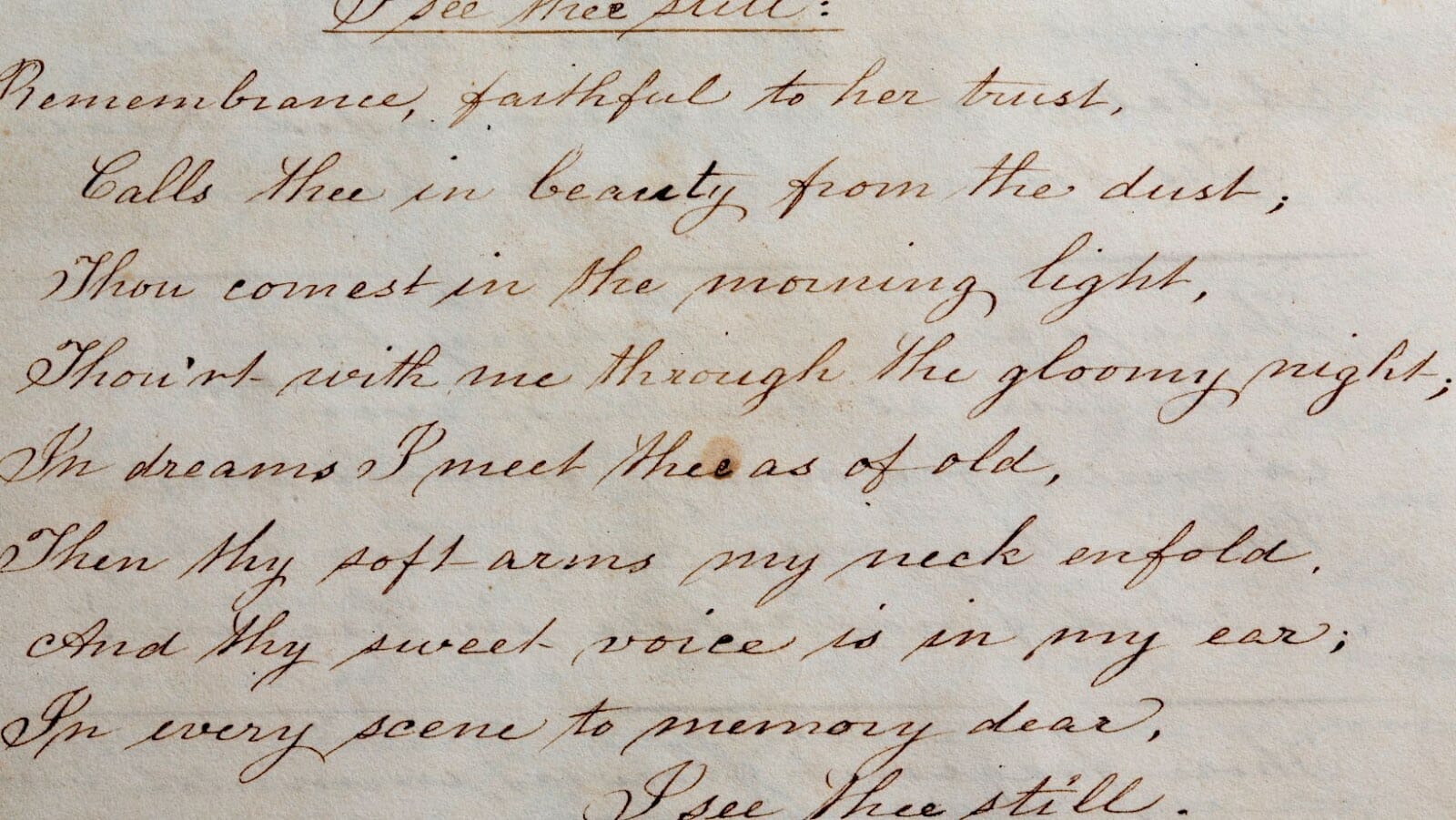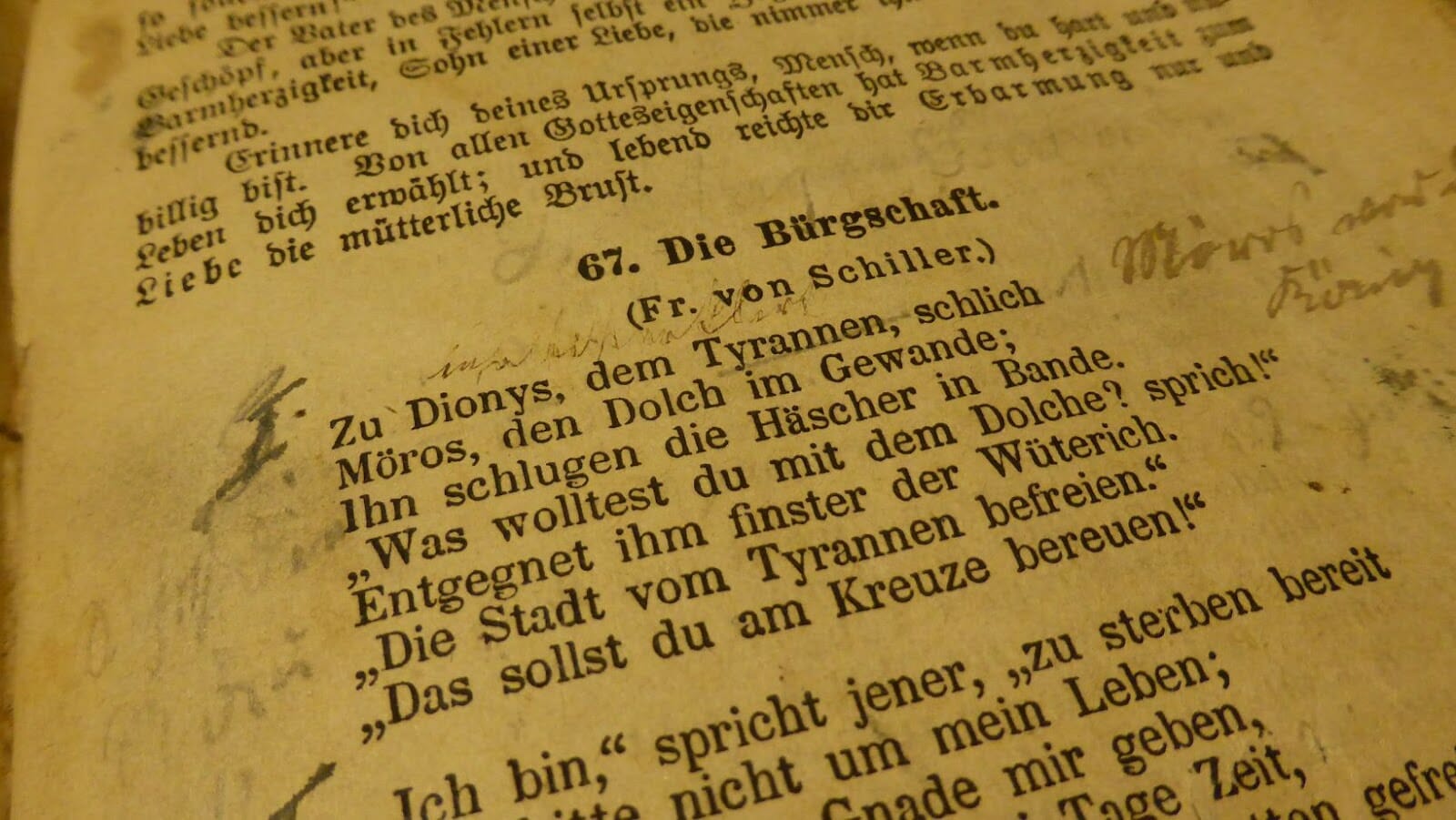Both “A Psalm of Life” and “Auspex” are poems with distinct rhyme schemes that contribute to the overall effect of the poems.
“A Psalm of Life” has a consistent ABAB rhyme scheme throughout the poem, giving it a strong sense of structure and continuity. This helps to reinforce the poem’s central message of the importance of making the most of one’s life.
Auspex” also has a consistent rhyme scheme, but it is more complex than that of “A Psalm of Life.” The poem has an ABABCDCD rhyme scheme, with the final two lines rhyming with each other. This gives the poem a more varied and dynamic feel, which is appropriate given its subject matter of the uncertainty of the future.
Overall, while both poems have clear and consistent rhyme schemes, they differ in their complexity and how they contribute to the tone of the poem.
Overview of “A Psalm of Life”
Henry Wadsworth Longfellow’s poem, “A Psalm of Life,” is one of his most popular works and has been widely studied by scholars. It is a reflection on the concept of living a meaningful life, through which Longfellow encourages readers to make the most of their lives, despite the inevitability of death.
In regards to the poem’s rhyme scheme, we can see that it follows the pattern of ababcdcdefefgg. In this article, we will discuss the rhyme scheme of “A Psalm of Life” in comparison to that of “Auspex” by Emily Dickinson.
Analysis of the poem’s rhyme scheme
“A Psalm of Life” by Henry Wadsworth Longfellow follows an ABAB rhyme scheme in each stanza, giving the poem a consistent and rhythmic flow. The poem has a total of nine stanzas with each stanza consisting of four lines. There is also a pattern of stressed and unstressed syllables in each line, adding to the musical quality of the poem.
In contrast, “Auspex” by Robert Browning follows a more complex rhyme scheme of AABBCCDD, with each line rhyming with the corresponding line in the next stanza. This creates a more structured and organised flow, but also gives the poem a more serious and formal tone compared to the uplifting and optimistic tone of “A Psalm of Life”.
Overall, both poems use different rhyme schemes to achieve different effects, but both are effective in conveying the message of the poet.
Pro Tip: Understanding the rhyme scheme of a poem can help readers appreciate the structure and musicality of the poem, while also gaining insights into the poet’s intentions and message.

Which Best Describes the Rhyme Schemes in “A Psalm of Life” and “Auspex”?
In “A Psalm of Life,” the rhyme scheme plays a crucial role in emphasising the poem’s message and tone. The poem uses an ABAB rhyme scheme and measures the metre in the iambic tetrameter, creating a musical quality that enhances the poem’s optimistic and uplifting tone. Longfellow’s message is that life is meaningful, and everyone must strive to make the most of it, making every second count. The regular flow of the rhyme scheme emphasises the idea that everyone should stick to regularity, discipline, and order, and the poem tries to promote an interpretation of life that gives people the courage to face their circumstances with a sense of hope and determination.
In contrast, “Auspex,” written by Nathaniel Parker Willis, uses an ABBA rhyme scheme and deploys a trochaic metre that creates a different effect. The ABBA rhyme scheme adds an unexpected quality to the poem, and the trochaic metre creates a more dramatic and suspenseful tone than the iambic metre in “A Psalm of Life.” In this way, the variations in the rhyme schemes of the two poems highlight how rhyme schemes can change the meaning and impact of the poem upon the readers.
Pro Tip: Writers who master rhyme schemes can employ them to emphasise the message and influence the tone of the poem. A rhyme scheme can create a structured feel, add an unexpected twist, or evoke a range of emotions that make the poem more memorable.
Comparison of the poem’s rhyme scheme with that of other Longfellow poems
“A Psalm of Life” by Henry Wadsworth Longfellow follows an ABAB rhyme scheme in each stanza, while his poem “Auspex” follows an ABBA rhyme scheme.
Other Longfellow poems like “The Song of Hiawatha” and “Paul Revere’s Ride” follow different rhyme schemes such as AA, AB, CB, etc.
The rhyme scheme in “A Psalm of Life” reinforces the poem’s optimistic and uplifting message, making it feel rhythmic and musical. On the other hand, the rhyme scheme of “Auspex” creates a more complex and introspective tone, leaving the reader with a sense of uncertainty and melancholy.
Longfellow’s versatility in using various rhyme schemes across his poems shows his mastery of poetic form and his ability to adapt it to convey different emotions and messages.
Overview of “Auspex”
“Auspex” is a poem written by American poet, Henry Wadsworth Longfellow. In this poem, Longfellow uses different types of rhyme schemes, like end rhymes, internal rhymes and slant rhymes. In order to understand how this poem’s rhyme schemes compare to “A Psalm of Life,” a closer look must be taken at each individual poem.
| In this section, | we’ll look at a summary of the poem “Auspex.” |
Analysis of the poem’s rhyme scheme
“Auspex” is a poetic work that follows a unique rhyming structure that adds depth and complexity to its meaning. The poem consists of nine quatrains, with a rhyme scheme of ABCCBADDG. Each line is carefully crafted to form a musical series of sounds that resonate with the reader and create a unique poetic flow.
In contrast, “A Psalm of Life” follows a more traditional rhyme scheme of ABAB. This structure is used to create a more predictable and regular pattern that is easier for readers to follow. While both poems effectively use rhyme to convey their meaning and engage readers, it is clear that “Auspex”‘s more complex rhyme scheme contributes to the intricacy and emotional depth of the poem. By playing with different rhyme patterns, the poem creates a sense of musicality that draws readers in and elevates the overall meaning of the piece.
Explanation of the effect of the rhyme scheme on the poem’s meaning
The rhyme scheme is a crucial component of any poem, as it contributes to the overall meaning conveyed by the poet. In “Auspex,” the use of the alternating rhyme scheme reinforces the poem’s theme of duality and opposites.
The rhyme scheme of ABAB reflects the idea that the speaker is at odds with himself, struggling to reconcile his present reality with his past. Similarly, the rhyme scheme in “A Psalm of Life” also contributes to its meaning. The poem utilises a consistent ABAB rhyme scheme to reinforce the idea that life follows a predictable, almost mechanical course.
When compared side by side, the contrasting rhyme schemes of “A Psalm of Life” and “Auspex” demonstrate the power of form in shaping the meaning of a poem. While one poem’s regularity functions almost like a mantra, the other’s alternate rhyme dissonance highlights an internal conflict of opposing ideas.

Comparison of the poem’s rhyme scheme with that of other Holmes poems
The rhyme scheme of “Auspex,” a poem by Oliver Wendell Holmes, compares to that of “A Psalm of Life,” another poem by the same author. While “A Psalm of Life” follows an ABAB rhyme scheme, “Auspex” has an ABBA rhyme scheme.
Despite the difference in rhyme schemes, both poems are written in iambic tetrameter, with four rhythmic units in each line. The use of this poetic metre gives both poems a sense of rhythm and musicality.
The rhyme schemes of “Auspex” and “A Psalm of Life” reflect the different tones and themes of each poem. “A Psalm of Life,” with its more straight-forward rhyming pattern, has a hopeful and uplifting message about the importance of living a purposeful life. On the other hand, the more complex rhyme scheme of “Auspex” creates a sense of tension and unease, reflecting the uncertain and foreboding subject matter of the poem.
Overall, the comparison of the rhyme schemes between “Auspex” and “A Psalm of Life” highlights the versatility and skill of Oliver Wendell Holmes as a poet.
Comparison of the rhyme schemes in “A Psalm of Life” and “Auspex”
When analysing the rhyme schemes of two poems, such as “A Psalm of Life” by Henry Wadsworth Longfellow and “Auspex” by Christopher John Brennan, it is important to objectively look at the pattern of the rhyme. Oftentimes, the best way to compare two poems is by closely examining the rhyme scheme of each poem.
In this article, we will compare the rhyme schemes in “A Psalm of Life” and “Auspex” and determine which one best describes each.
Identification of similarities between the two poems’ rhyme schemes
Both “A Psalm of Life” by Henry Wadsworth Longfellow and “Auspex” by Christina Rossetti share similarities in the rhyme scheme of each poem. In both poems, the rhyme scheme is ABAB CDCD EFEF GHGH.
Both poems are structured with four-line stanzas with a consistent rhyme throughout the poem. These rhyming patterns give the poems a musical quality and help to tie together the themes and ideas being presented.
However, while the overall rhyme scheme is the same in both poems, the content and themes they address are quite different. “A Psalm of Life” discusses the importance of living life to the fullest, while in “Auspex”, Rossetti explores the themes of death and the afterlife. Despite these differences, the rhyme scheme helps the reader to appreciate the poetic qualities of each work.

Identification of differences between the two poems’ rhyme schemes
“A Psalm of Life” and “Auspex” are two poems with contrasting rhyme schemes.
“A Psalm of Life” employs an ABAB rhyme scheme, with the first and third lines of each stanza rhyming, as well as the second and fourth lines of each stanza rhyming with each other.
“Auspex,” on the other hand, uses an ABBAABBACDCDCD rhyme scheme, with a more complex pattern of rhyming words.
While “A Psalm of Life” has a consistent and straightforward rhyme scheme, “Auspex” employs a more complex structure, with a mix of masculine and feminine rhymes.
Understanding the differences between these two rhyme schemes can provide insights into the varying styles and techniques used by poets.
Evaluation of how the similarities and differences contribute to the respective poem’s meaning
The rhyme schemes in “A Psalm of Life” and “Auspex” contribute significantly to the meaning of each poem. In “A Psalm of Life,” the rhyme scheme is ABAB, which creates a consistent and steady flow to the poem. This rhyme scheme reflects the message of the poem, which emphasises the importance of perseverance and continuity in life. The consistent and predictable pattern of the rhyme scheme reflects the idea that life should also be lived with a sense of consistency and stability.
On the other hand, “Auspex” has a more complicated rhyme scheme, with internal rhymes and slant rhymes that vary throughout the poem. This reflects the meaning of the poem, which questions the nature of fate and free will. The varying rhyme scheme, much like the varying nature of the poem’s subject matter, creates a sense of unpredictability and uncertainty.
Overall, the rhyme schemes of each poem contribute to the meaning of the poem in unique ways, reflecting the tone and message of each piece.


